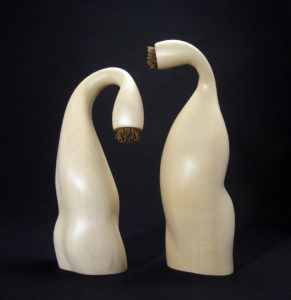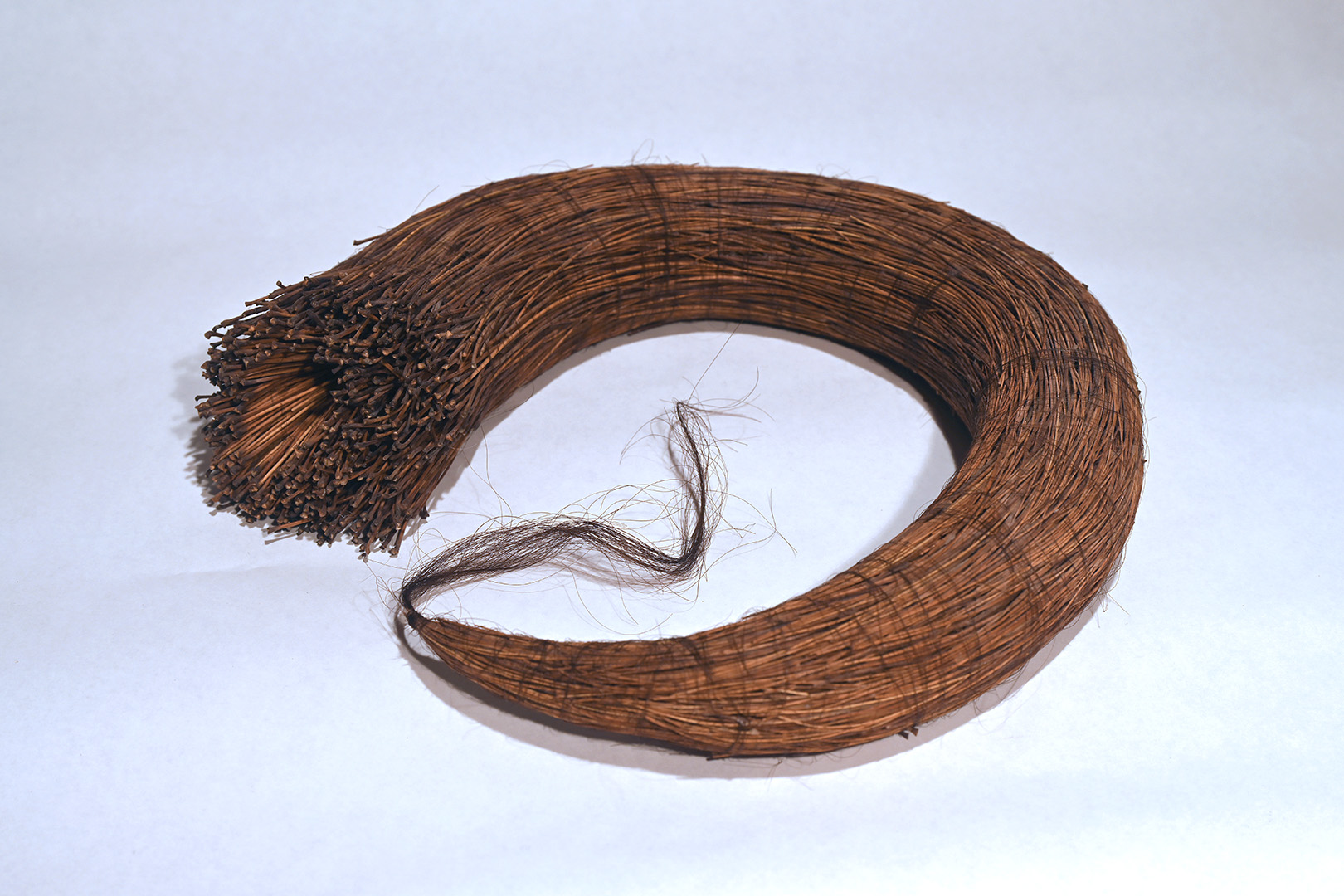
MOWA’s Mona Boulware Webb Curatorial Engagement Fellow Brianna Cole talked recently with Kyoung Ae Cho, exhibiting artist in Magic Wilderness, on view through January 15.
Kyoung Ae Cho is a fiber and mix media artist, born in Onyang, South Korea. She has her BFA from Duksung Women’s University in Seoul, South Korea and an MFA from Cranbrook Academy of Art in Michigan. Her work has been exhibited nationally and internationally with recent exhibitions in Belgium, Finland, and France. She is currently the Fibers Area Head at the University of Wisconsin–Milwaukee’s Peck School of the Arts.
Brianna Cole: Tell me about your journey.
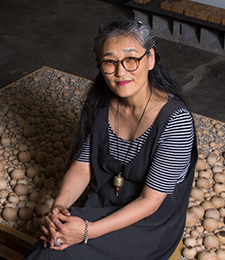
Kyoung Ae Cho: My area of focus is in fibers, but I have also been doing installations and sculptures. I went to undergrad in Korea. That’s where I discovered fibers. While I was in Korea, I was told my work was “very western,” so when I decided to pursue Graduate school, I figured America would be a better fit for me. I got my master’s degree from Cranbrook Academy of Art.
BC: What inspired you to pursue fibers?
KC: It started with my grandmother. She taught me how to sew and use a real sewing machine. I was making proper doll clothing from age five or six, even though no one in my family was an artist. I did not know there was such a thing, so I thought about going into fashion design. At school, the fashion department was part of Home Economics but that sounded so boring. Then someone else mentioned art school and the craft department, where you could learn to make fabric and dyes. I thought I already know how to make clothing so I can make my own unique fabrics. That’s how I got into fibers without knowing what it entailed.
BC: Do you find that your collaboration with nature is a personal experiment or a documentation/observation of nature’s experiments?
KC: Both. I try to be very careful when collecting materials. I say to my found material, “Okay you want to come with me,
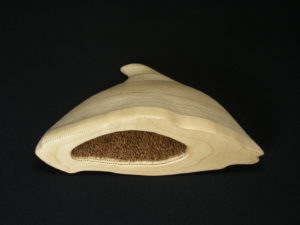
and I work with you?” I don’t cut down trees to make my work; I use found objects and materials. Who am I to abuse nature for art?
I spend a lot of time documenting the world around me. I take photos, A LOT of photos. It’s like how mothers and grandmothers have full walls of photographs of their children. I love documenting natural growth. Not only am I learning but also being inspired by shape and form.
Believe it or not I’m not an outdoors person. I don’t really care for the sun. I’m a night owl, but in order to be out and documenting, you have to be a daytime person. I am exploring but also trying to understand and document natural processes. When you are out in nature and surrounded by natural forms, there are a lot of lessons about strength, fragility, and death. Nature is a mystery, and it’s very interesting.
BC: How are viewers meant to feel when viewing your work? What do you want them to experience?
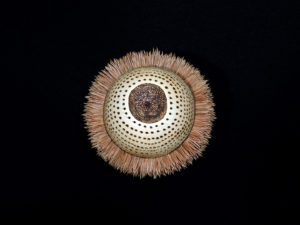
KC: My work is process-oriented, and I enjoy every aspect of it, from making to documenting to packaging. It’s all very personal and equally important to me.
When I’m out gathering materials people will ask what I am doing. When I show them my ideas or what I’m collecting they say, “oh, that is beautiful.” Otherwise, they don’t pay attention to such parts of nature.
When viewing the final work, people often are most interested in the process and the natural elements. My work is very simple. The materials are mundane and not very fancy. Everyone seems too busy, and we don’t often pause to appreciate these small moments of nature. But, if I can encourage some appreciation and meditative reflection, then that’s good enough for me.
BC: Is there anything else you would like to share with your readers?
KC: I feel blessed and selfish because I have discovered this practice and can do it without financial or health issues. Some people feel blessed from very small things. Some people can never feel blessed even with huge events. If my art-making process can encourage a meditative moment to feel peace and positive energy, I feel blessed.
